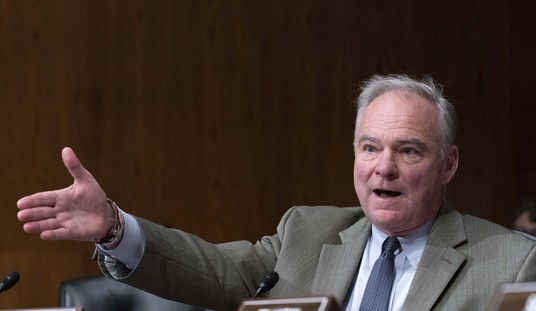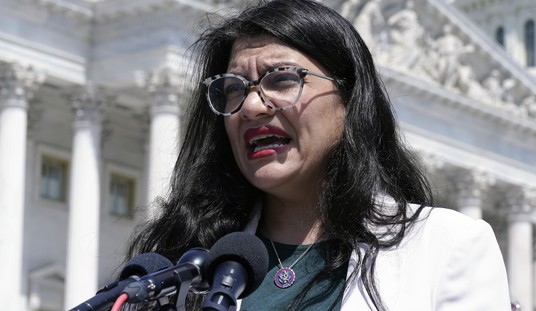
Medal of Honor recipient Marine Sgt. Dakota L. Meyer
The McClatchy news service reporter, who broke the December 14 story “Marines promoted inflated story for Medal of Honor recipient” about questions swirling around the process that led to the nation’s highest military honor to Marine Sgt. Dakota L. Meyer, spoke to Human Events about why he wrote it.
“What the story really is—is an attempt to liberate Dakota,” said Jonathan S. Landay, who was embedded the Marine’s military training team from the 3rd Marine Division during their September 8, 2009 mission to the Afghan village of Ganjgal. It was there they were pinned down in a ferocious ambush and firefight.
Meyer stayed behind with the vehicles with Staff Sgt. Juan Rodriguez-Chavez, as the rest of the element dismounted and walked into the village. When the MTT came under fire, and began taking casualties, the two men on Meyer’s initiative joined the fight with a one of the Humvee’s.
Chief among the questions raised Landay’s article was the simple math of his getting credit for rescuing 13 Marines and soldiers, when 11 military personnel, and Landay himself, were on the mission and four were killed in the firefight with one dying later from his wounds.
Other discrepancies include evidence that Meyer killed one insurgent, not eight and that the personnel rescued were evacuated by helicopters, not Meyer, according to the article.
The article also cites sworn statements that describe Army Capt. William Swenson, who was commanding the element, retrieving dead and wounded in an unarmored Ford Ranger, rather than Meyer, who was in riding in a Humvee—facts in contradiction to the accounts in the narrative accompanying medal and an account given by Meyer in an interview on the September 18 broadcast of the CBS program “60 Minutes.”
“That’s what makes this so tragic,” Landay said. “The Marines know what is wrong with this kid; he has PSTD and doesn’t know what he is saying. They juiced it up– they didn’t vet it with witness statements that came in his own medal packet.” There is nothing in the public record that Meyer has been diagnosed with post-traumatic stress syndrome.
“They didn’t do due diligence and then, they hang this kid out to dry,” he said.
“Maybe he will come out on the right side of it,” he said. “The story puts the blame where it should go, the leadership,” he said. The last commandant, Gen. James T. Conway, who retired at the end of his term in August 2010, is the one who pushed for this because Meyer would be the first living Marine to receive the Medal of Honor.
Landay said he does not know how Dakota walks back from accepting the Medal of Honor.
“What he could have said was: ‘I don’t want it, I don’t want it, it doesn’t belong to me,” he said.
The journalist said if he did not write the story, someone else would have. “It is better to have me, who know the personalities, walked that ground, then some guy, who got ahold of the same documents and does a slam-job on the guy.”
Beyond the need to set the record straight, Landay said his article give voice to those other military personnel, who were there that day.
“It is the truth for those who died, those who were wounded,” he said.
“What everyone is ignoring is that there are other men, who were in that valley—and other men who put their lives on the line in more ways than one—not just physically,” he said.
Meyer was presented the Medal of Honor by President Barack H. Obama Jr., at a September 18 ceremony.
“These guys, who were not invited to the White House, they sat at home, they were not acknowledged by their nation,” he said. “They had to listen to a story, they knew is wrong.”
“Everybody is focused on Dakota Meyer, and nobody is focused on those men—that includes the Marine lieutenant colonel, who nominated him for the medal, who was barred from the medal ceremony,” he said.
Meyer’s commander, Lt. Col. Kevin Williams submitted recommended him for the medal, and has been quoted in press reports supporting the Meyer’s receiving the Medal of Honor. “Of course, he put him in for it. Do you think he agrees with the story they are putting out?” he asked.
“I was stuck in that ambush and was tossed an M-4 to defend myself by one of the Marines,” he said. It was Marine Lt. Ademola Fabayo, who gave Landay the carbine. “That man was not invited to the ceremony—and he was awarded the Navy Cross.”

McClatchy journalist Jonathan S. Landay during his 2009 embedded tour with Marines in Afghanistan. Landay was part of the September 8, 2009 ambush, where Marine Sgt. Dakota L. Meyer earned his Medal of Honor.
Meyers’ comrades refused to go on the record, he said.
Like other men, who have lived through combat, they do not talk about it, even if there is no controversy, these Marines will not go on the record, he said. “That’s why I wrote this story.”
“Put yourself in the shoes of those five guys, who were there with him—including the commander who nominated him for the medal,” he said.
At one point at the White House ceremony, Obama asked all of Meyer’s comrades to stand and be recognized, he said. “About two rows of Marines stood up, but of all those guys, only three had been there at the ambush—No one else. There were five guys missing,”
The story changed between the original submission and the presentation by the President, he said.
“It got all blown out of proportion,” he said. “They consulted with the submitting officer about the citation, but they didn’t speak to him about the narrative,” he said. The narrative was posted in August at Marines.mil, when the medal presentation was first announced.
“Nor did they speak to him about the speech Obama gave because he wasn’t going to agree with the narrative,” he said.
The ambush at Ganjgal
Landay was with the headquarters element that dismounted approximately one mile outside of the village, where the Marines conducted a key leader engagement with a the village’s leadership.
“This was a routine operation, we were going in on a goodwill mission,” he said.
But, the mission was not without danger, he said.
Two days earlier, a tribal leader was heard on the radio saying that the villagers should not want the Afghan government to establish a presence in the village, he said.
“They knew we were coming, and they were waiting for us,” he said. “We literally walked into a kill-zone.” More than 50 insurgents attacked the element, many with helmets, flak vests and heavy weapons. Requests for artillery support were denied, so as to avoid civilian casualites.
The four Marines killed went in in of the dismounted column at the far end of the village, where they set up an observation post for overwatch, as well as to provide cover for the main body as it exited the town, he said.
“I’ve covered regular and irregular wars since 1985, all over the world,” he said. His assignments have included Iraq and the Balkans. “Everybody I was with had never, ever been in this kind of situation before in their entire military careers.”
“”That’s how bad it got in there,” he said. The firefight lasted six hours and was not over until helicopters arrived to evacuate the Marines and provide supporting firepower.
There is absolutely no question that Meyer’s actions were good, brave and consistent with his duty, he said. “At one point, I tried to go into the kill zone and help with the rescues, I had an M-4 in my hand, I had my Kevlar on—and it was Dakota Meyer, who stopped me from getting into the truck,” he said. “He was right to stop me from going in.”
White House, Marine reaction to the story
In the days after Landay’s story broke, the story was picked up by media outlets around the world. When reporters pressed the White House for comment, the White House expressed support and referred reporters to Marine Corps public affairs. The Marines at first put out a statement that they relied on Meyer’s own account to justify the awarding of the Medal of Honor.
Finally, Marine Gen. James F. Amos, the commandant, December 16 released a strong endorsement of Meyer’s combat heroics and his medal.
In his closing paragraph, the general said, “In the final analysis, I did not find cause to question any single fact, nor minor discrepancy that may be buried in descriptions of a battle that lasted for hours and evoked such bravery in our troops. My only question is – where do we find such men?”
Historian Robert J. Laplander, who writes the “Medal of Honor Roll Call” column for the Human Events weekly newsletter Guns & Patriots, said, “If the Commandant of the Marines is standing behind it, from what I know, I would tend to side with the official Meyer’s story.”
Laplander, who was part of an investigation that led to exposing a fake Medal of Honor recipient in Wisconsin, said, “The commandant is not going to go along with a lie.”
There is a culture in the Marines that must be considered, he said.
“While Marines like to puff their chest out, at the same time, if somebody is a poser, they are going to be the first ones to call him out.”
The Swenson Medal of Honor packet
Landay said the other shoe to drop will be how the Pentagon will handle the Medal of Honor packet for Swenson.
“How are you going to process Swenson’s Medal of Honor packet, when there is a narrative that does not fit Dakota Meyer’s?” he asked.
Until it emerged a few weeks ago, Swenson’s packet was lost for 19 months, he said.
“The packet is still active,” he said. “After being lost for 19 months? Lost? You don’t lose a Medal of Honor packet. They don’t get lost.”








Join the conversation as a VIP Member